Addressing current global challenges such as biodiversity loss, global change and the growing demand for ecosystem services requires improved environmental forecasting. Increasing data availability and increasing computing power are driving the development of quantitative approaches to ecology. However, to use these developments in environmental forecasting, a flexible methodological framework is required. Deep Learning (DL) is a rapidly growing branch of Machine Learning (ML), however, today it has little use in the environment. This also applies to the training of Deep Neural Networks (DNNs), i.e. artificial neural networks, consisting of many layers and a large number of neurons. This article provides an example (including code and data) of creating,training and application of DNNs in environmental forecasting. Using bark beetle outbreaks in conifer-dominated forests as an example, the authors show that DNNs are well placed to predict both short-term and local risk of infection and longer-term dynamics at a larger scale. Also, the article shows that DNNs have a better result in comparison with standard approaches to predicting the dynamics of a bark beetle outbreak, and have a high potential for forming an integrated forecasting system in this area.and long-term dynamics on a larger scale. Also, the article shows that DNNs have a better result in comparison with standard approaches to predicting the dynamics of a bark beetle outbreak, and have a high potential for forming an integrated forecasting system in this area.and long-term dynamics on a larger scale. Also, the article shows that DNNs have a better result in comparison with standard approaches to predicting the dynamics of a bark beetle outbreak, and have a high potential for forming an integrated forecasting system in this area.
Introduction
Ecology is a relatively young discipline, and many of its theoretical foundations are less than a century old. In recent decades, there have been significant advances in ecology, which, in particular, is reflected in the more active application of environmental knowledge, data and methods, as well as in the advancement of predictive ecology. Environmental forecasting is used to create verifiable quantitative estimates of the future state of an ecosystem. The increased focus on forecasting is due to the growing awareness that ecology is central to some of the most pressing challenges facing humankind in the 21st century, such as the impacts of climate change and biodiversity loss.
Making accurate environmental forecasts is more realistic than ever before. This is the result of three processes.
-, , .
-, .
.
— , , . , , . , , .
— ML. DL - (DNN). (Artificial Neural Networks, ANNs), . , DL , ( ) ( ) . , (, ), . , DNNs ANNs, , ML .
ML , . , ML , (. S1). — . .

S1. ()
, Scopus «deep learning», «deep neural networks» «dnn» : , , . «» (Other) , (Prediction) (Classification), DNN ( : 8.11.2018).
- . , . , . , , . , , .
, . DNN 2- :
•
• .
, . (), . (.1):
• ( , )
•
• ( ).

1. .
k . , (n), , (m). (w).
DNN . , (. 1). w. , .
, , (Convolutional Neural Network, CNN). CNN . . , . .
DNN , . , . , , , . S2 DNN, DNN.
23- (Ips typographus L.) (), 13 319 . , , Seidl et al., 2016.
, 30 × 30 m . DNN :
• (. . , 19 × 19 , , (Picea abies (L.) Karst.))
• , ,
• (.. )
• ( , ) , , 33- 66- .
, , , .
DNN 1,87 . xi 19 × 19 . , : . , xi 19 × 19 = 361 + 2 = 363 . 19 × 19 270 382 , 95% . yi — / .
1:
DNN . , , . , (1993, 1997, 2005). DNN. 1,58 , — 292 559 (15,7% ).
2:
DNN , . 373 817 (20%) . 80% DNN. , DNN .
(. 2) , . , . , 1 ( ). : ( ), , . , (accuracy) . 2. TensorFlow Intel QuadCore CPU (Intel i5-6600) NVidia GTX 1070 GPU.
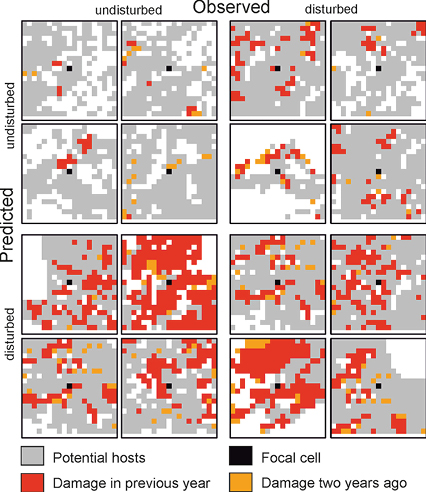
2.
19 × 19 ( -: 30 × 30 ) , (focal cell) ( ) ( ).
. Accuracy ( ) , ( 3,48% ). Precision, Recall, F1 Score, Conditional Kappa, True Skill Statistic ( 1).
Conditional Kappa True Skill Statistic -1 +1, +1 , > 0 , , . 2- , , F1 Score .
Gleichlaeufigkeit, , ( 1).
DNN, 1 2 , , , , H2O.
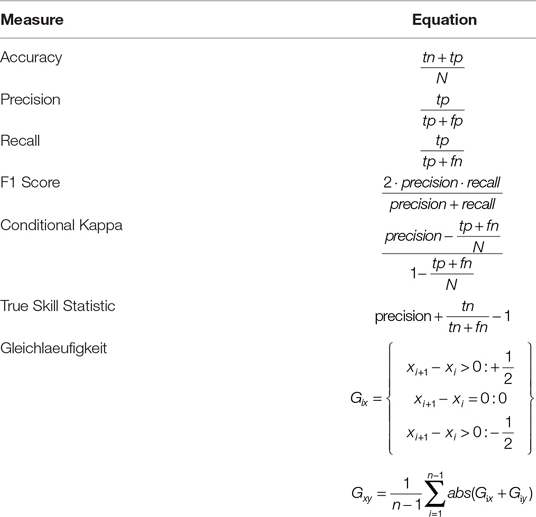
1. DNN.
N —
tp —
tn —
fp —
fn —
DNN
, softmax; - , (weight decay), (dropout), - (batch normalization). S2 DNN. , () ( ) . 60 , . , (accuracy). GitHub , .

S2. (). .
1:
DNN , 1993, 1997 2005 (. 3). : Accuracy - 0.966, Precision - 0.652, Recall - 0.392 ( 2). Conditional kappa True skill statistic, , 0.637 0.626 . 2 , , -.
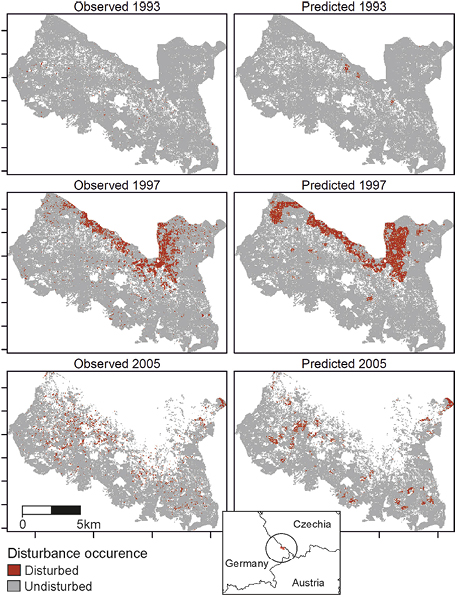
3. (Observed) (Predicted) 1993, 1997 2005 .
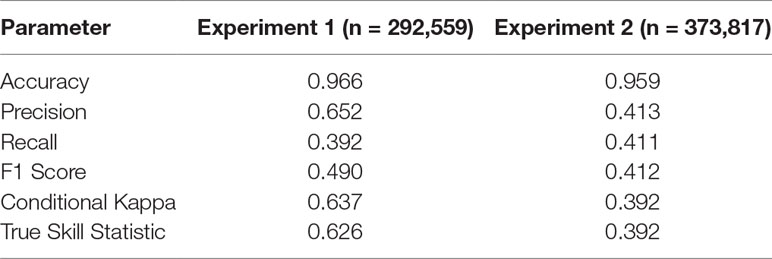
2. .
2:
2 Accuracy ( 2). 4 , . 23- DNN, ( 1990- ) , 2003–2007 . S3 , Seidl et al. (2016). Gleichlaeufigkeit DNN 0.750, , (0,727).

4. , 2 (N = 373 817).
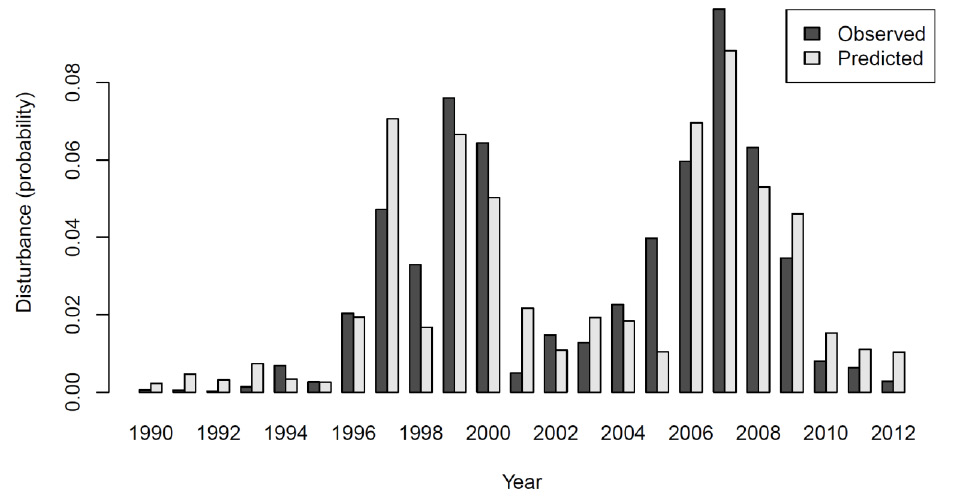
S3. ().
DNN , ; (random forest) DNN 2 ( S1). , ( ) . .
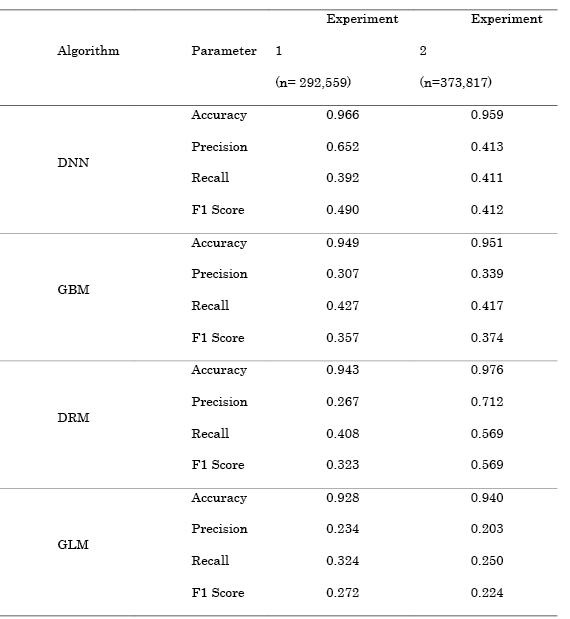
S1. ().
DNN .
DNN — deep neural network /
DRM — distributed random forest /
GBM — gradient boosting machine /
GLM — generalized linear model /
— . . , . , , , Ecology, Journal of Ecology, Ecology Letters, BioScience, Ecological Applications, Journal of Applied Ecology, Diversity and Distributions Global Ecology and Biogeography. , , , .
, . DL — . , . process-based , .
ML DNN , « » — . , , . , , , . , . ML , .
DNNs - (, , ). , , , . , DNNs ( ).
- , , . , , . , DNNs . , , . , ( ), , DNN. , , . , , . DNN , .
— , DNNs , . DNN - , , , . , . , , , DNNs , . , , , . , ML , . , , , , . , .
Note
Translation of "Harnessing Deep Learning in Ecology: An Example Predicting Bark Beetle Outbreaks" by Werner Rammer and Rupert Seidl.